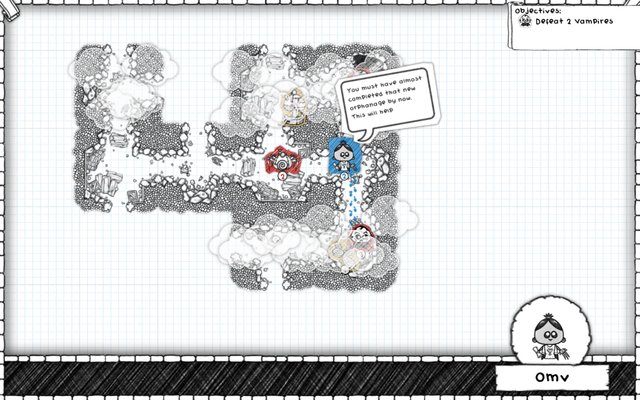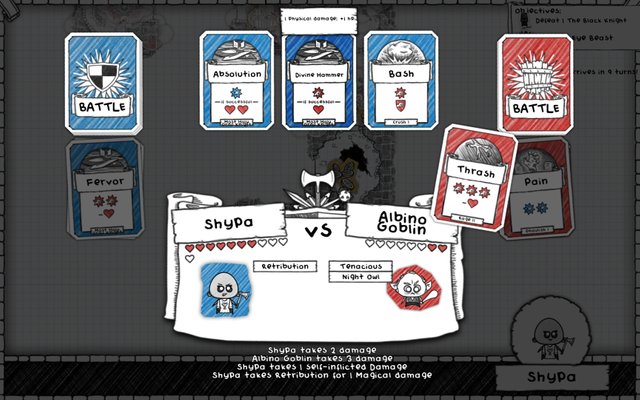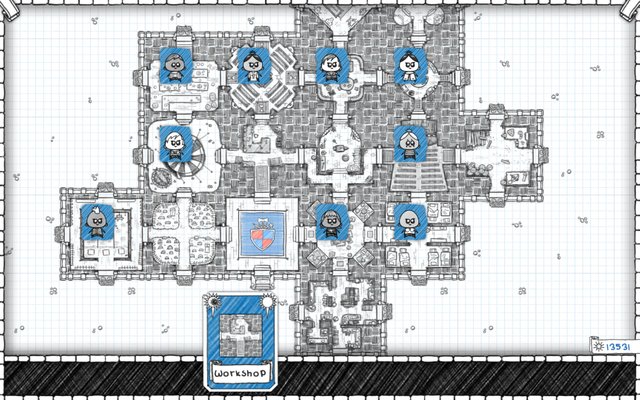Guild of Dungeoneering Review | Turn-Based Indie Card Game RPG
"The Guild of Dungeoneering may be a videogame but it is a great example of how tabletop gaming has been wonderfully, exuberantly, explodingly increasing in popularity amongst gamers of all ages and preferences. This means that at least several tabletop titles and/or gameplay mechanics are finding their way unto our computer and mobile screens.
Gameplay mechanics
The Guild of Dungeoneering is a very tabletop-inspired game, both in terms of map generation as well as its other mechanics.
Tile placement map generation
When entering a dungeon there will usually be some sort of end-goal. Normally you have to reach the final boss and defeat him but these can also be time-trial type goals.

The player is actively involved in creating the dungeon map via the very tabletop-like mechanic of tile placing however, you cannot rotate the tiles around to make them fit a particular given situation, you have to use them in the position that they are given, which increases the difficulty.
The game doesn’t leave the tile placement mechanic at that though, instead adding a couple of very interesting options alongside it, so as to make the increase in difficulty, not only more palatable, but almost unnoticeable.
You should still do your best to plan out your map layout to a certain extent, but the end result will depend heavily on the tiles that you get, as well as on the goal of the dungeon.
Semi-Deck builder mechanic
Your adventurers - here aptly called dungeoneers - each start off a dungeon with a basic type and number of ability cards in their deck of actions.
You can only customize these decks to a certain degree. Your basic deck of abilities is influenced by the type of dungeoneer you take out - they tend to be focused on physical damage, magic damage, card advantage, healing and the like. You can then add cards to this basic deck via in-game items, once you level up your dungeoneer.
The type and variety of items is yet another factor you can control, but again, only to a certain extent. You can purchase the items that your dungeoneers can then find while adventuring, but they will be randomly generated, so you can never know for sure, exactly what you’ll get. All you can do is to make the particular type of items that you prefer, available.
Combat
Another fun type of tabletop mechanic that the game implements is the very Munckin-like mechanic of allowing you to pit your dungeoneers against monsters of your choosing. You’ll have to learn and master using the mechanic because this is the only sure-fire way to level-up your dungeoneers and as such, is an important way of gaining access to the earlier mentioned items.

Combat itself is pretty straight forward, you draw cards from your deck, choose one and compare it with the card your enemy chose, you then resolve whatever effects the cards illustrate. But make no mistake about it, despite the whimsical art and overall atmosphere, there is a fair amount of strategy to be had during these fights. It’s not necessarily who has the best or strongest cards, it’s also how and when one uses them.
Despite the art-style and particularly comedic approach to writing, the game is contrastingly challenging.
Your dungeoneers will reset after leaving each dungeon - if they survive the trip, that is - which means that you need to be very strategic in how you approach the overall goals of each dungeon. In some circumstances it might be worth trying to go straight for the main goal - benefiting from the start of dungeon buffs which you can also build into your guild - or spend time and run your character through some monsters to upgrade them and get some items.
You can’t really direct where your adventurer goes, instead you can place incentives along the way to coax him or her into going where you want them to go. Rest assured, this doesn’t always work as you might want it to. Which is great, it makes you actively work throughout the game.
Dungeoneers who do manage to survive will gain some interesting permanent status effect, the battle scars, with the special mention that these can be either positive or negative.
Art style and direction
The art style is wonderfully sketchy and hand-drawn. Its look is meant to be something that maybe a child would draw - mind you, a very artistically consistent child with a bright future - so as to heavily contrast with the gruesome things happening. Which works great with the overall tongue-in-cheek art direction and design of the game.
But the greatest thing relating to the art direction, is that everything is actually drawn on graph paper. Which is a wonderful atmospheric and immersive touch, I tip my imaginary hat to the person who came up with that idea.
There’s also a nice reference to the Might and Magic series of games, separating damage into physical and magical, with the relevant color-coding of course.

And on a more personal note, the Guild of Dungeoneering’s art style is very inspiring to those wannabe game designers such as myself who only have a very limited range of illustration skills.
Replay value
The Guild of Dungeoneering is here to more or less prove that simple doesn’t necessarily equal easy.
The game itself is not only a very entertaining and fun grind for the gold you need to expand your guild and hence explore new dungeons, but it is also a veritable dungeoneer meat grinder, so don’t get attached to them, like at all.
There will be several dungeons which will eat up dungeoneer after dungeoneer, you’ll run through several strategies and ability bonuses until you make enough money to get either a different type of dungeoneer or a different combo of items or you simply have several, very lucky draws.
Music
Besides the great art direction and visual style, the Guild of Dungeoneering experience is perfectly rounded out by the soundtrack.
While made up of generally instrumental-only songs - which are great and atmospheric - the soundtrack also features the occasional bard song. A bard will sing about your achievements or lack thereof in a very tongue-in-cheek style, but always great to listen to. Special emphasis goes to the intro song which will worm itself into your brain and you’ll find yourself singing “This is the Guild of Dungeoneering” to yourself while doing very mundane tasks.
Thank you for watching this video and I hope you found it informative. Please don’t forget to upvote, resteem, comment and follow!"
...
I uploaded the original article up on Rugged Gamers: http://ruggedgamers.com/guild-dungeoneering-review/
You can find me in these places as well:
Twitter: https://twitter.com/StefaNonsense
Facebook: https://www.facebook.com/CNonsense/
Instagram: https://www.instagram.com/stefanonsense/
Congratulations @stefanonsense! You have completed some achievement on Steemit and have been rewarded with new badge(s) :
Click on any badge to view your own Board of Honor on SteemitBoard.
For more information about SteemitBoard, click here
If you no longer want to receive notifications, reply to this comment with the word
STOP